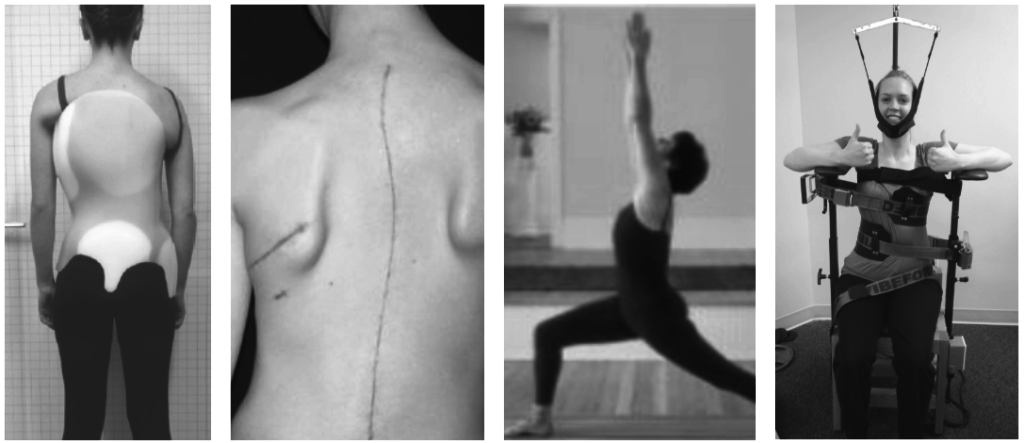
There are a variety of scoliosis treatments available, and it can be difficult to make sense of them all. This article provides you with an overview of your options.
Scoliosis Treatment Table of Contents
Watching and Waiting
Scoliosis Bracing Methods
Scoliosis Surgery Methods
Scoliosis Exercise Treatments
Diet for Scoliosis
The Strauss Method
Observation (Watching and Waiting)
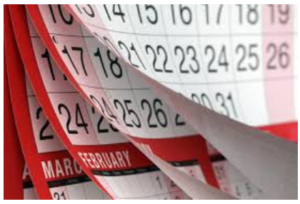
The most frequent approach to smaller curves is “watching and waiting”. Because most orthopedic specialists are unaware of the success of exercise-based treatments, the patient is simply advised to “do nothing”. They are told to return for an X-ray in 4-6 months and take no further action. If the child has pain, advice is typically to manage the pain with over the counter medications and use general physical therapy of heat, electric stimulation or massage.
We, at Strauss Scoliosis Correction, reject this approach! Would any rational person say to someone with a potentially serious illness, “just wait”? Imagine if a patient were to present to a doctor and be told they have a diagnosis of heart disease, diabetes, or cancer… and the doctor told the patient that he would not begin care until it was worse… “come back in 4-6 months and I’ll see if it is severe enough to begin treatment.” Our approach is to be proactive. All large scoliosis curves have one thing in common, they began as small curves. Smaller curves are easier to treat… don’t wait until the curve is larger, more complicated, stiffer, and more challenging to treat.
Scoliosis Bracing Methods
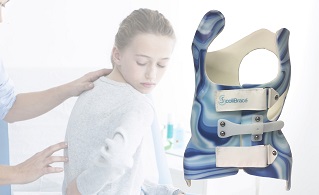
Bracing is currently the standard treatment for AIS in curves that are considered to be moderate in their severity and are likely to progress. Older design Scoliosis braces such as the Boston brace or what are commonly called Thoraco-Lumbo-Sacral-Orthoses (TLSO) are typically prescribed to treat adolescent idiopathic scoliosis with the intent to stop the progression of the curve. Many older design TLSO braces are “off the shelf” designs, NOT custom made for the individual patient. Even when these braces are individually designed, they are little more than modified “barrel” braces.
| Key Thought: Modern research reveals that bracing requires accompanying exercises to be effective, yet we find a high percentage of patients presenting at our center with a brace and no exercises. This is a recipe for failure according to modern scientific gold standard scoliosis bracing. |
Types of Scoliosis Braces:
Charleston and Providence Braces – Part-time scoliosis braces are designed to be worn only at night. Research has shown that this type of bracing is only effective on small curves.
Milwaukee / Cervico-Thoraco-Lumbo-Sacral Orthosis (CTLSO) – Originally designed for post-operative immobilization of the spine, today we rarely see the Milwaukee brace design because when applied incorrectly it risks significant damage to the jaw and neck.
Chêneau Brace – A de-rotation brace in polyethylene.
Rigo Chêneau Brace – An advanced design of the original Chêneau brace by Dr. Rigo of Barcelona that combs his classification of scoliosis.
SpineCor Brace – A dynamic corrective brace that uses soft, elastic materials. Independent research on soft braces (such as SpineCor) have shown that they are not likely to be effective on curves above 20-25 degrees or on stiff spines (Adults).
ScoliBrace – A custom brace that uses a 3D overcorrective design. A powerful tool applied in rapidly progressive curves that are not responsive to an exercise based approach alone. This brace design is also effective in cases of postural side shift and a modified version of the design can be used in specific cases of kyphosis. A specific variant of the ScoliBrace is used for adults that are having end of day pain due to postural collapse or fatigue from their scoliosis as gravity takes its toll.
Read more about scoliosis bracing >
Scoliosis Surgery Methods
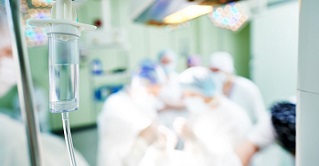
Rod and hook surgery with spinal fusion remains the most commonly used surgical method. Two or more vertebrae are permanently joined creating a single, rigid section of spine that is no longer moving. Rods made of various steel alloys are secured directly to the vertebrae by hooks, screws and wires to stabilize the fused area.
Children with scoliosis who are rapidly growing or have a significant amount of growing left to do, are often recommended for surgery that involves replacing the rods at set intervals. This could mean 10 or more spine surgeries over the years until they reach complete skeletal maturity, often followed by a final fusion surgery.
Common Scoliosis Surgery Methods:
MAGECTM (MAGnetic Expansion Control) System – A system where rods can be expanded remotely. Less surgery is needed.
Non FDA approved less invasive methods:
Vertebral Body Tethering (VBT) – The spine is tethered with screws and a dacron cable. The side of the spine that is secured with the tether grows less than the non-tethered side.
Vertebral Body Stapling (VBS) – Instead of a dacron tether being attached to the spine via screws “staples” are used to lock the vertebrae into place.
ApiFix – This surgery involves no fusion. An alloy hinge with a ratcheting feature is attached to the spine by screws. Two weeks later the patient begins to perform stretching routines that activate the implant. As the patient bends the ratchets of the implant hold the increasing degree of correction.
Only selected patients are eligible for these less invasive scoliosis operations. At the time of writing, these methods have not been approved by the FDA.
Read more about scoliosis surgery >
Exercise-Based Scoliosis Treatments
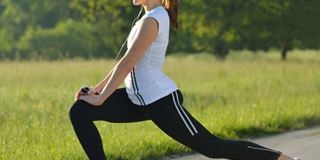
Pilates – Pilates is a body conditioning routine that helps build flexibility and, strength in the legs, abdominals, arms, hips, and back. However there is no research showing the effectiveness of these programs in the treatment of scoliosis.
Yoga for Scoliosis – Sometimes called “Furniture Yoga”, this approach uses aids like pillows, bolsters, chairs and blankets to produce a customized yoga program to stabilize the spine. The purpose of yoga is to create a curve stability. Yoga by itself will not correct scoliosis or alter its progressive nature, however it is very useful as part of comprehensive scoliosis correction treatment plan
Read more about yoga for scoliosis >
The Schroth Method – A physiotherapeutic treatment system designed to reshape the rib cage and de-rotate the scoliotic spine using isometric and breathing exercises. Its goals are to halt progression of the curve, and in selected cases to reverse the curves.
Research has shown the theoretical effectiveness of Schroth, but unfortunately other research has exposed the difficulty of applying the complex maneuvers of Schroth in the home.
SEAS (Scientific Exercises Approach to Scoliosis) – An individually designed exercise approach to stabilizing scoliosis involving “Active Self Correction” during which, the patient is personally trained in front of a mirror on how to unbend and de-rotate their scoliosis. This method works beautifully along with the CLEAR protocols to stabilize the correction achieved during the CLEAR treatment.
Methode Lyonaise – A physiotherapy for scoliosis using scoliosis specific exercises, spinal mobilization, and training the patient how to sit is a corrected posture. This method has not received wide acceptance outside France.
FITS (Functional Individual Therapy of Scoliosis) – Main principles of FITS include postural awareness, myofascial release, gait training, muscle strengthening, side shift, and breathing exercises. FITS has not received wide acceptance.
Side Shift – This system is built upon the theory that a flexible curve can be stabilized with lateral movements. Breathing exercises are included to expand the chest cavity. This method has not received wide acceptance outside the UK.
Vojta – This method consists of stimulating specific points on the body to create “reflex-like” movements that lead to something like “freeing a switch” or “new networking” within functionally blocked networks of nerves between the patient’s brain and spinal cord. This method has not received wide acceptance. Very few centers offer this approach.
Dobomed – Scoliosis stabilization exercises concentrating on restoring the normal front to back shape of the spine. It is an offshoot of Schroth.
BSPTS (The Barcelona Scoliosis Physical Therapy School) – Another offshoot of the work of Schroth. Treatment is based on patient education, psychological support, and is often used with bracing and when necessary with surgery.
CBP (Chiropractic BioPhysics) – A system of exercise, traction and spinal manipulation based on the principle of mirror imaging spinal distortions.
CLEAR Method – One of the most prominent exercise-based methods, CLEAR is based on three steps: 1) Mix – “unlocking” the curvature from the original position, 2) Fix – encouraging the scoliotic spine back to a more normal position using corrective exercises, and 3) Set – locking in the modified, straighter spinal position by retraining the brain’s postural control center to hold the new spinal position.
Source
Read more about scoliosis exercise methods>
Diet & Nutrition for Scoliosis

Scientists studying the underlying triggers of scoliosis have identified some chemical/nutritional imbalances that are linked to the development or progression of scoliosis. While this type of research is in its early days, we know that imbalances in the bodies sex hormones, deficiencies in calcium, selenium and vitamin D, along with melatonin signally disorders are important to scoliosis. It is not possible at this stage of scientific discovery to develop a complete “scoliosis diet.” Taking the research into consideration though, we can investigate the biochemistry of the patient and balance any weaknesses that are apparent as well as provide advice to avoid dietary imbalances in the future.
The Strauss Scoliosis Method
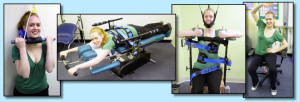
Based on examination findings including: X-ray examination, posture examination, and proprioceptive or balance examination and evaluating a patient’s scoliosis to determine what will successfully reduce and stabilize their spinal curvature. A custom designed program of care is developed and then the patient is trained in applying the program as a home based therapy. Our approach is to empower the patient to self treat with an effective and comprehensive plan.
Isometric and Isotonic Exercises: Used to stabilize any unstable areas in the spine, and to derotate the scoliosis. By carefully examining the patient including an analysis of X-rays, a custom program of usually one sided isometrics and isotonic exercise is developed for each individual. There is no “one size fits all” when it comes to this type of approach.
Targeted Stretching Protocols: During the examination process, areas of rigidity are identified. These areas are the focus of the targeted stretching. Shortened neural tissues can also be specifically targeted for stretching to allow the spine to lift and lengthen during the CLEAR protocol treatments.
Active Self Correction: An essential component of all exercise based scoliosis corrective programs like SEAS, Shcroth, and the other methods listed above (see above for more information)
Neuro Muscular Reeducation (NMR): Using an unstable surface, whole body vibration, and the application of selected weights on the head, trunk and/or pelvis, the posture is retrained back to a balanced position.
Activities of Daily Living: Advice on how to use the normal daily activities as a therapeutic tool. An example is carrying a school bag (or hand bag). Strap length, weight, and carrying position can be used to influence the posture and scoliosis in a positive way. Other daily activities that are amended include sleep position, sitting position, reading, shoe type and correct breathing.
Use of Heel and Sole Lifts: When the scoliosis is being influenced by a significant leg length discrepancy that cannot be resolved by balancing the pelvis or eliminating nerve pressure, heel or sole lifts are used as a component of a successful scoliosis treatment program.
Read more about Strauss Scoliosis Correction treatment >
For more information contact our office